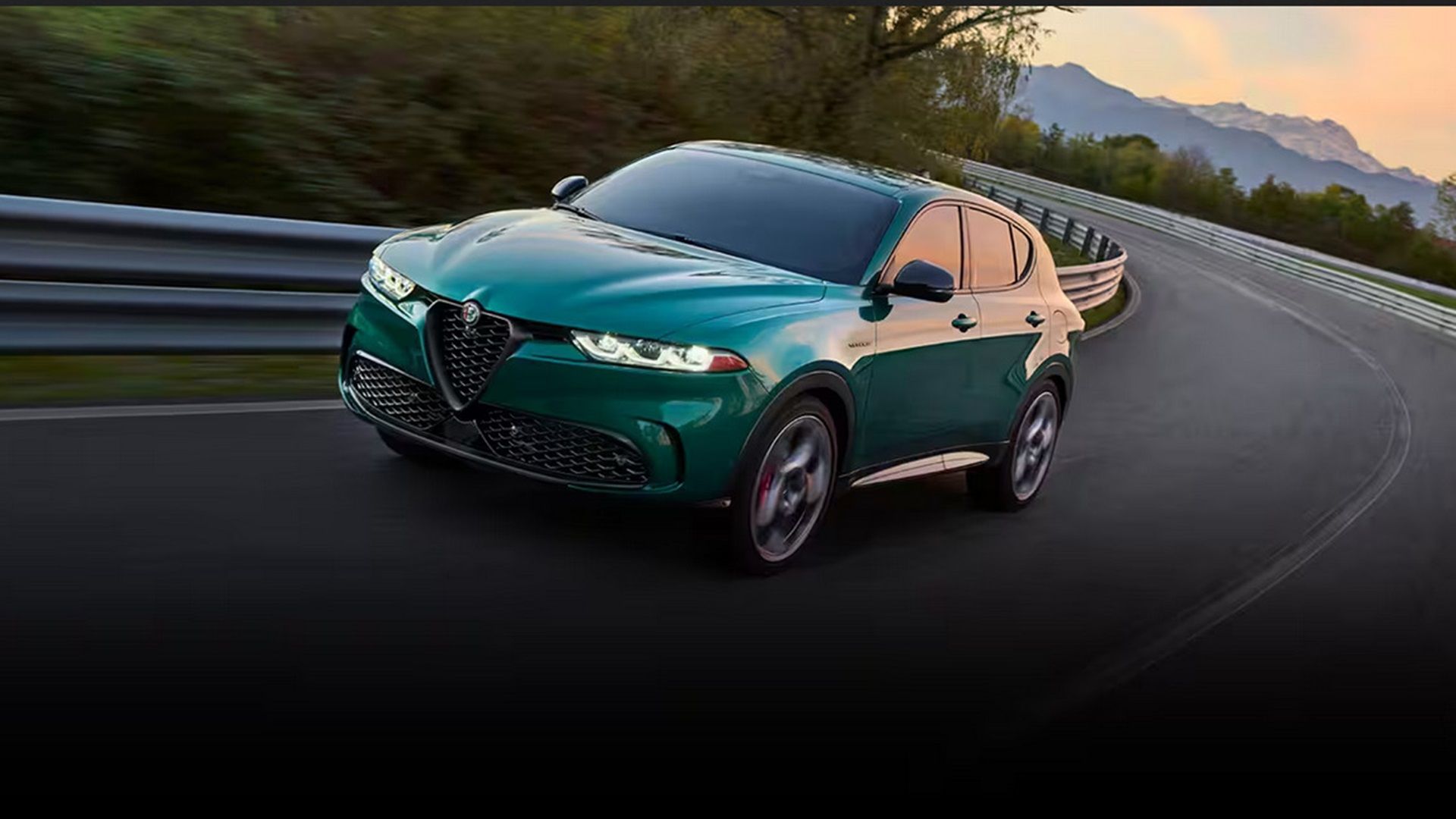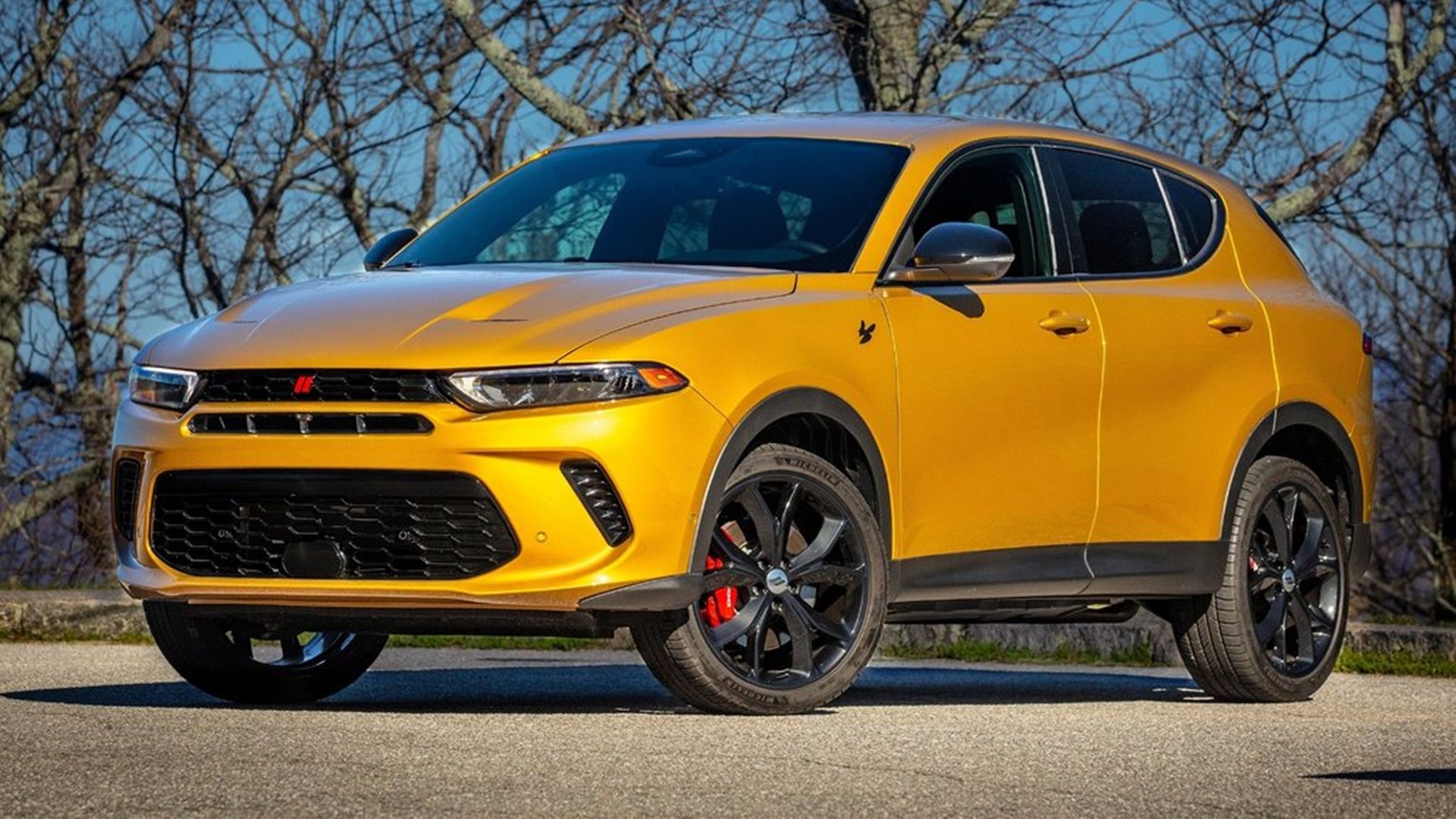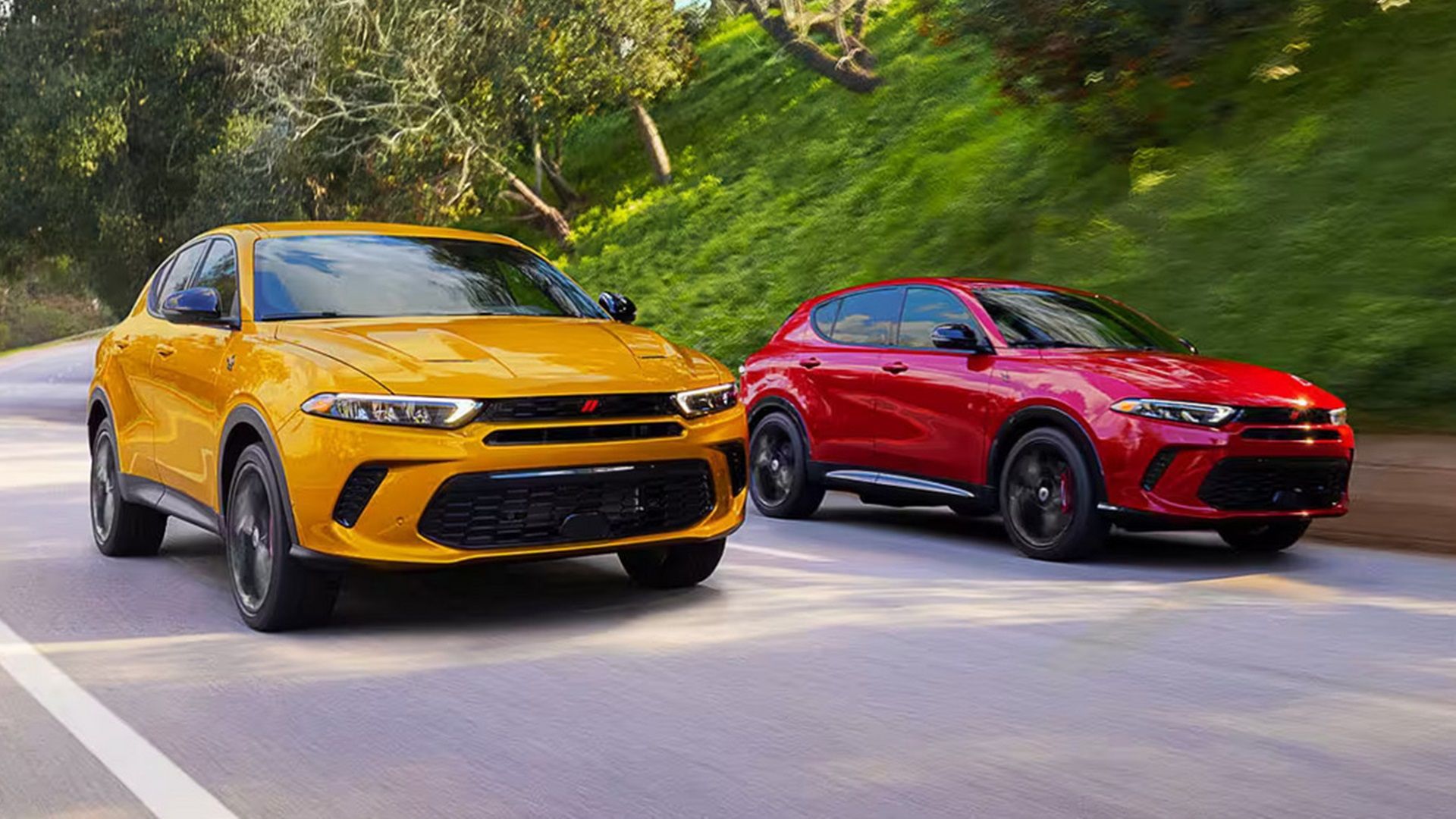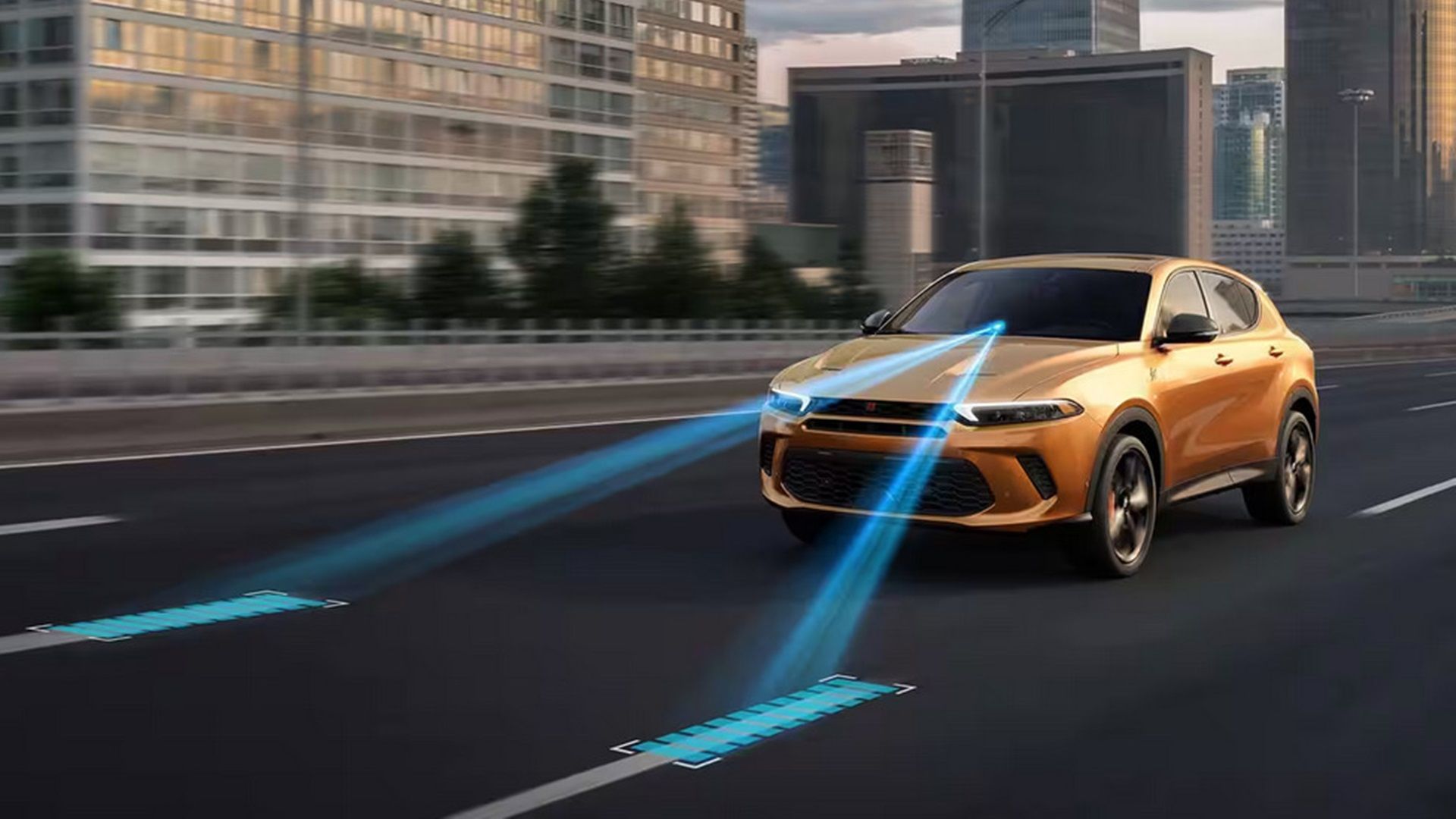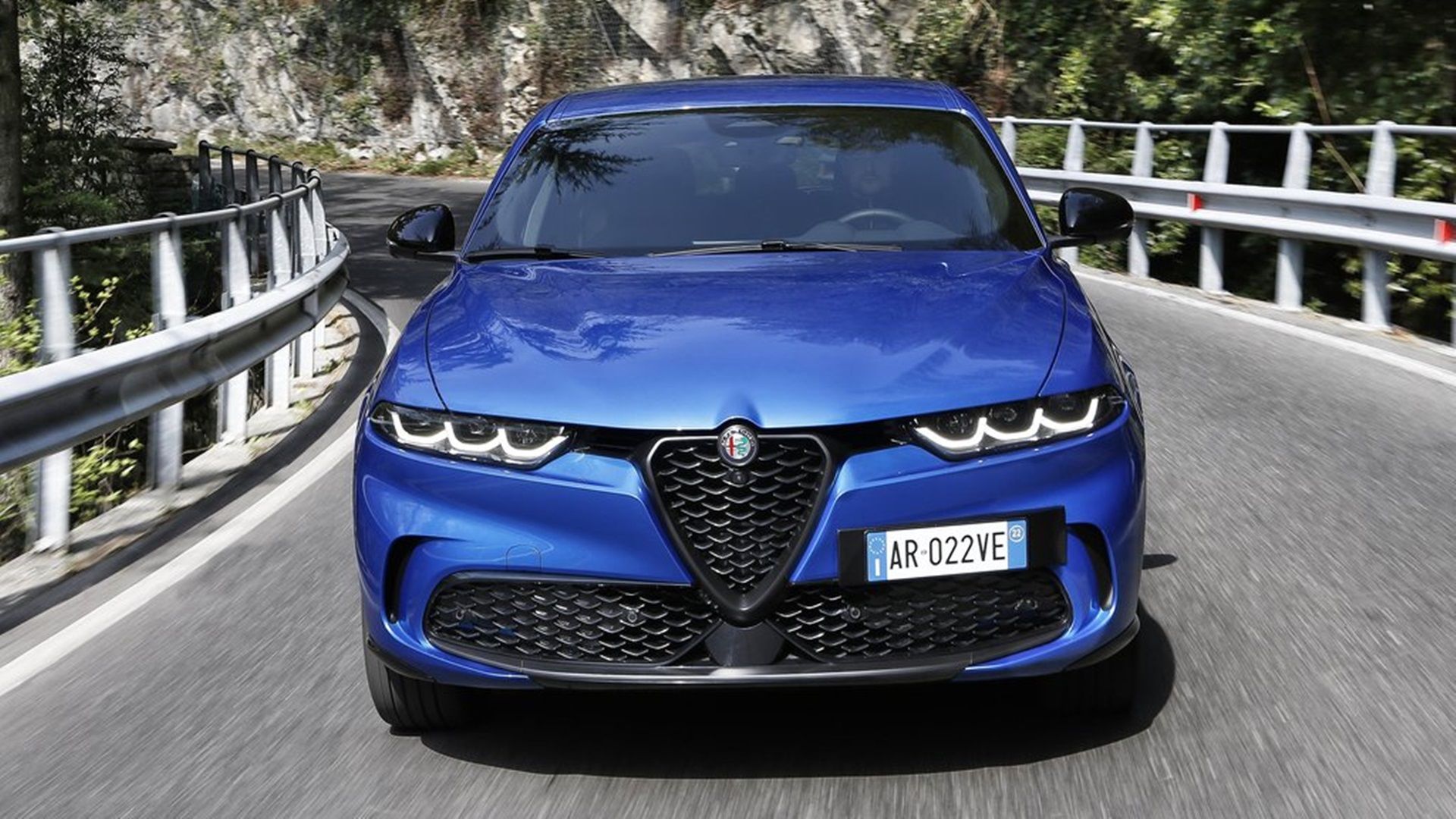Dodge has been making headlines with its gas-guzzling, big-power muscle cars. Even the Durango full-size SUV has received a Hellcat variant. But the Dodge lineup has been stale for a long time and only making updates to old vehicles that have been in production since 2011. But Dodge has recently introduced an all-new model called the Dodge Hornet. This new vehicle inserts Dodge into the competitive compact crossover segment and aims to introduce a lot of new buyers to the brand.
On the other spectrum, Alfa Romeo has seen a resurgence in their brand with the introduction of the Giulia sedan and Stelvio SUV which are great vehicles. A third vehicle has joined the lineup which shares a lot of similarities with the Dodge Hornet. The Alfa Romeo Tonale was first previewed in 2019 so we knew it was coming, and it’s finally here. This is Alfa’s answer for a compact Italian crossover, and we expect it to be a good vehicle.
Is The Alfa Romeo Tonale Just A Better-Looking Dodge Hornet?
This would be right except the Tonale came first, it was first shown as a concept car at the Geneva Auto Show in 2019. It was a good-looking SUV with the Alfa Romeo design language, and to Alfa’s credit, the production vehicle looks just like the concept. The front has the iconic V Scudetto Grille and large bottom which has been a trademark of Alfa Romeo cars since the ‘50s. Its adaptive LED Trilobo headlight design looks interesting and gives the vehicle a sporty look.
The side profile of the Tonale is normal with black body cladding and the familiar five-hole which date back to the 1960s. The back end mimics the front with the Trilobo taillights but with a full-width light bar and no visible exhaust. Alfa Romeo has always drawn design inspiration from its history and the Tonale wears the modern interpretation well.
The Dodge Hornet has been teased before in 2006 but was pitched as a mini MPV and not a crossover. The new Hornet has no resemblance to that concept and Dodge has gone for an imposing look for this vehicle. Dodge has designed the upper and lower grilles with a honeycomb pattern to mimic a hornet’s hive with the Dodge Rhombi logo in front. A noticeable difference is the hood vents on the hood which are not present on the Tonale.
The Hornet logo is also seen on the front quarter panel similar to a Hellcat logo on the other models. The side profile looks very similar to the Tonale with the black body cladding but the wheels are less interesting. At the back, the styling is similar to the Tonale but the LED light bar design looks like a smaller version of the one found on the Dodge Durango. A neat feature is the first-ever illuminated Rhombi logo.
|
Dimensions |
Alfa Romeo Tonale |
Dodge Hornet |
|---|---|---|
|
Length |
178.3 inches |
178 inches |
|
Width |
72.4 inches |
82 inches |
|
Wheelbase |
103.8 inches |
103.8 inches |
|
Height |
63.2 inches |
63 inches |
|
Wheel size (inches) |
18-20 |
17-18 |
|
Weight |
4,133 pounds |
4,140 pounds |
|
Towing Capacity |
2,000 pounds |
2,000 pounds |
Both car brands are owned by the Stellantis group and share the same small wide 4×4 LWB architecture. This means both cars also have similar dimensions but the Hornet is a bit wider and the non-hybrid trim is a bit lighter at 3,715 pounds. The Tonale is named after one of Italy’s highest mountain passes and takes shapes from nature. Meanwhile, the Hornet gets its name from a deadly wasp, and Dodge knows how to come up with cool names.
Identical Interior Design And Layout
There are a lot of similarities in the design and layout of the interior of both vehicles. The steering wheel design and button locations are identical. Physical climate controls are found just beneath the center screen and the center console layout is the same. They also have similar features and technology which include:
- 12.3-inch digital instrument display.
- 10.3-inch center touchscreen.
- Apple CarPlay and Android Auto.
- Amazon Alexa.
- 4G LTE Wi-fi Hotspot.
- 14-speaker Harmon Kardon Premium Audio System (optional).
- Power adjustable and memory seats.
- Sunroof and many more.
There are a few differences like the start-stop button on the steering wheel of the Tonale but the Hornet has it on the center console. The side air vents have different designs, and the Tonale uses better materials compared to the Hornet. Interior room is similar in both vehicles since they have the same wheelbase. But the Hornet has more cargo space at 27 cubic-feet while the Tonale has just 22.9 cubic feet. This is because of the underfloor storage in non-hybrid Hornet GT models.
The Dodge Hornet Offers More Powertrain Options
Alfa Romeo Tonale Vs Dodge Hornet PHEV And Dodge Hornet GT
|
Alfa Romeo Tonale |
Dodge Hornet RT |
Dodge Hornet GT |
|
|---|---|---|---|
|
Engine |
I-4 Turbo hybrid |
I-4 Turbo hybrid |
I-4 Turbo |
|
Displacement |
1.3 liters |
1.3 liters |
2.0 liters |
|
Power |
285 horsepower |
288 horsepower |
268 horsepower |
|
Torque |
350 pound-feet |
383 pound-feet |
295 pound-feet |
|
Transmission |
Six-speed automatic |
Six-speed automatic |
Nine-speed automatic |
|
Drivetrain |
All-wheel drive |
All-wheel drive |
All-wheel drive |
|
Fuel economy (MPG) |
23/29 City/Highway |
NA |
21/29 City/Highway |
|
EV Range |
30 miles |
30 miles |
None |
|
Battery |
15.5 kWh |
15.5 kWh |
None |
|
Fuel tank (gallons) |
11.2 |
11.2 |
13.5 |
|
0-60 MPH |
6 seconds |
5.6 seconds |
NA |
The Alfa Romeo Tonale and Dodge Hornet share a similar four-wheel drive hybrid powertrain with a slight power bump in the Hornet. While the Tonale has only one powertrain, the Hornet also gets a slightly bigger non-hybrid engine option. Performance numbers are also similar at 6 seconds but the Hornet is a bit faster, and both cars have a range of over 300 miles. There are different drive modes available for each car which changes its character depending on your choice:
- The Tonale has four modes which are: Dynamic, Natural Mode, Advanced E, and ESC Off.
- The Hornet has three modes which are: Hybrid, Electric, and eSave mode.
Safety Features And Warranty
There are a lot of safety features equipped in these vehicles to keep you safeorn. They include:
- Electronic Stability Control (ESC)
- Roll Stability Control (RSC)
- Traction Control
- Blind Spot Monitoring Blind Spot
- Forward Collision Warning
- Lane Keep Assist
- Lane Departure Warning
- Collision Mitigation-Front
- 360 Camera
- Brembo brakes and many more.
Reliability hasn’t been the strongest aspect for either brand but they do provide acceptable warranty:
Alfa Romeo Tonale Vs Dodge Hornet Warranty
|
Duration |
Alfa Romeo |
Dodge Hornet |
|---|---|---|
|
Basic Years |
4 |
3 |
|
Basic Miles |
50,000 |
36,000 |
|
Drivetrain Years |
4 |
5 |
|
Drivetrain Miles |
50,000 |
60,000 |
|
Corrosion Years |
5 |
5 |
|
Corrosion Miles |
Unlimited |
Unlimited |
|
Roadside Assistance Years |
4 |
5 |
|
Roadside Assistance Miles |
Unlimited |
60,000 |
The Alfa Romeo Tonale Is More Expensive
Alfa Romeo has a more upscale brand recognition compared to Dodge. Although they may be similar in a lot of ways the Alfa Romeo Tonale has a higher MSRP when compared to the Dodge Hornet. The Alfa Romeo Tonale is a big premium over the Dodge Hornet but the badge and design do deserve an extra charge. Prices for the Tonale Start at $44,590 while the Hornet starts at $32,330 with more expensive trim levels.
Alfa Romeo Tonale:
- Sprint: $44,590
- Ti: $47,250
- Veloce: $51,290
Dodge Hornet:
- GT: $32,330
- GT Plus: 37,330
- RT: 42,530
- RT Plus: 47,530
